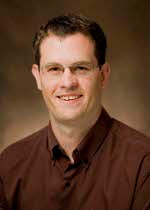It's that time of year when many club teams begin to form and tryout dates are set. I thought I'd write a few articles on the subject from a picking and a pickee point of view. Today I'll address how I've approached picking a team.
The challenge with tryouts is there are only so many days where you have to select a team. Picking the top people is not really a challenge, and it all comes down to the last 2 to 10 people on the bottom of the list - the cusp.
 Pictured Above: Why you don't schedule Sectionals on Easter. My team (Toronto) came fourth at Michigan sectionals and played through weather like above while I sat at home with my family eating ham (courtesy of Mark Kowgier).
Pictured Above: Why you don't schedule Sectionals on Easter. My team (Toronto) came fourth at Michigan sectionals and played through weather like above while I sat at home with my family eating ham (courtesy of Mark Kowgier).To pick these last spots the first thing we do is look at emerging talent. Who among these players is most likely to transition into a premium player over the next few months? This is an instinctual feeling, and can be right or wrong. Then the question is will these people develop faster as the lead talent on a lower level team or will they be better served on the higher team. This is a tough question in itself that depends on what position the person would play. Primary handlers tend to be best served on lower teams where they learn to carry a team on their own through experimentation without major repercussions. Defensive players, secondary handlers, and stud cutters tend to develop well on the higher team with more mentoring and examples.
Next, we look at the team's makeup in terms of positional roles. How many people do we have who can play as a D handler? How many tall people do we have? How many really fast people do we have? Do we have enough people who can consistently break or are known end-zone finishers?
Once we know who we have, then we ask if the remaining people on the cusp can fill those roles or can be taught to fill those roles. At this point you begin to compare player A against player B in the roll Z. These comparisons are made based on tryout performance and past history (the latter of which is not always available). If you are making your pick decisions during tryouts then you can match up or put players into specific rolls (under the inevitable pressure of a tryout) to see how they perform. Player A and player B can fill similar roles to see how they perform.
One other point to ask when picking a team is the size of the team. Why can't you just increase the size of the team to take the players on the cusp? This option can mean too little playing time for low ranked players, which will stunt their development or take time away from your stronger players. If you consider using this option, then it is a good idea to find out who will be attending what tournaments and base your decision on team attendance as opposed to theoretical team size.
On Thursday I'll continue this discussion about tryouts with some related polls. Suggestions welcome.
PJ


3 comments:
hey Peter its Mark from Torontula.
Two things:
- a question: is it possible to play in the roy/gt/goat tryout league in May if I can't tour in the summer? I ask because I am traveling for all of July and August and would love to at least work on my competitive game in May/June
- The picture you used in this post was taken by me not Tim.
thanks dude.
I am astounded by your repeated and abysmal use of the word "cusp".
Please stop at once.
Yours truly,
- dictionary.com
I am astounded by the previous poster's abysmal use of the dictionary.
http://m-w.com/dictionary/cusp
1. Point (of transition), edge, verge (e.g. on the cusp of stardom).
Post a Comment